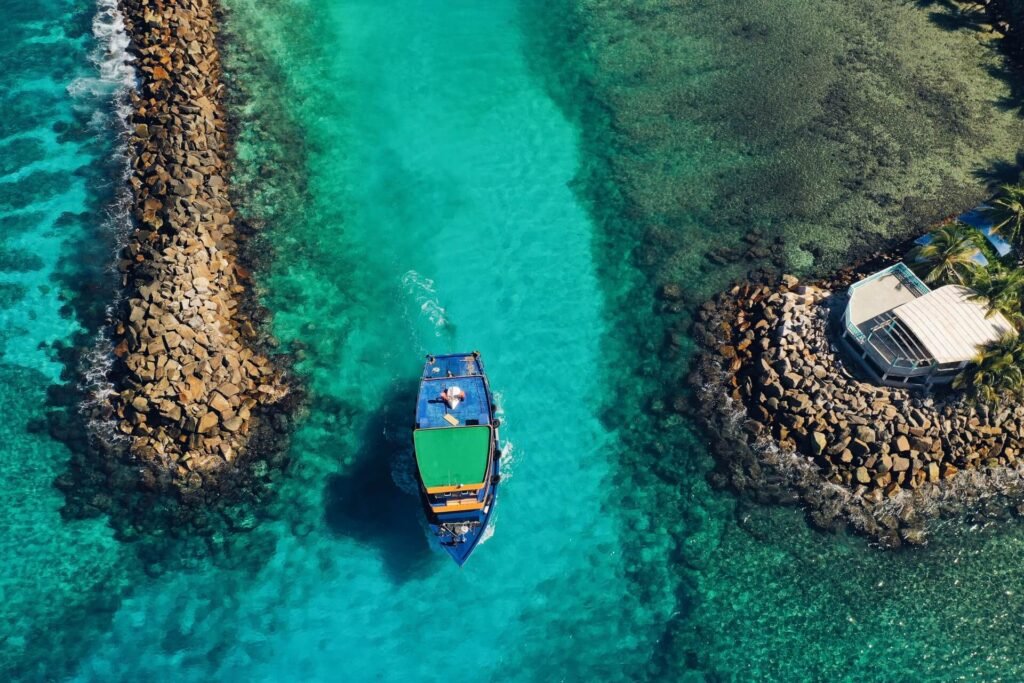Your basket is currently empty!
Dhonis – Traditional Maldivian Wooden Boats

Those who wish to see a slice of paradise will agree that The Maldives comes very close to providing a similar experience. Pristine white sand beaches, intriguing marine life, and dhonis – traditional Maldivian wooden boats to explore the sparkling ocean. Add delectable local cuisine to the mix, and you have the perfect formula for heaven on Earth!
It is hard to imagine that an island nation so small can offer so much to explore. When you land at the Velana International Airport in Male – the capital city of The Maldives, you are only seeing the tip of the tourism iceberg that The Maldives offers. From sandbank picnics and island hopping trips to walking tours and dhoni cruises, this Asian wonderland has plenty to keep you occupied for days!
What is a Dhoni?

Also known as dhoani, a dhoni is a sailboat, typical to The Maldives. Traditionally, a fishing boat, dhonis generally have Latin ring sails which are triangular in shape, and set at an angle to the mast of the boat to catch wind to propel it forward. The sails are also called lateen sails, and are tied to a long yard to be able to control the angle it makes with the mast.
Sometimes, these sailing vessels are also outfitted with a motor, making the sails redundant. Nowadays, dhonis are not only used for fishing but have multiple purposes such as cargo transportation, the movement of passengers, water sports, and more. They are widely used in tourism-related activities across The Maldivian islands.
The fishing dhonis of The Maldivian islands are of many kinds themselves. The masdhoni is a pole and line boat, mainly used for catching tuna, only of the largest exports of this country. Some masdhonis are also used exclusively for sailing. The mechanized dhonis are called vadhudhoni in Dhivehi – the local language of The Maldives. The classic dhoni with oars is still used as a rowboat, especially in the reef areas where trawling is used to catch fish.
The History of Dhonis

The name ‘dhoni’ can be traced back to two distinct origins. The word ‘doni’ comes from the southern Indian languages of Telugu, Tamil, Konkani and Kannada, whereas, another etymological streak points to the Persian word for ‘yacht’.
Even the Malayalam word ‘tuoni’ bears some similarity with ‘dhoni’ but it means “a small boat”. Some southern Dravidian languages which use the word “tull” to mean “to dig” are also thought to be the reason behind dhoni’s moniker.
Closely resembling a dhow, the traditional sea vessel of the Arabs, the dhoni has been an integral part of The Maldives. It is known to be the oldest sailing vessel that this island country has ever seen. It is said that early dhonis were dug out of a log of wood, earning them that fitting name.
Many centuries ago, dhonis were used exclusively by the Maldivian fishermen. Intriguingly, some of these sea vessels were built of coconut palm timber, the locally available raw material. Much later in the 19th century A.D., as a result of the Industrial Revolution, the fishing community of the Maldivian archipelago progressed to mechanized versions of dhonis.
The real, visible change arrived much later in The Maldives, in the 1980s, when the country put a loan of USD 3.2 million into mechanizing most simple dhonis. This coveted loan was received from the International Development Association (IDA).
This modernization, however, added to the cost of operating expenses for each dhoni, as they now had to account for fuel expenses also. Nevertheless, the gamble proved to be profitable to the local fishermen when they almost doubled their capacity to catch fish in a matter of only 3 years.
Dhoni Construction
If you thought that it requires detailed planning to build a dhoni, you are in for a surprise! Erstwhile dhoni’s of The Maldives were constructed without any pre-planned design. There was only one task of taking all measurements, which was performed by the master carpenter. He was also the man who instructed the other carpenters on the nitty-gritty of boat making.
Much has changed with time. Today, the dhonis in the Indian Ocean are largely built of fibreglass, owing to the multiple advantages it provides. Fibreglass boats are very easy on maintenance and a lot lighter than any wooden boat of yore.
The cleaning and repair process is also quite a breeze. These are built very easily and are perfect for those who like their dhoni cruises to be relatively noise-free. A disadvantage with wooden boats was that they could not be kept in water for months in a go, but not with fibreglass dhonis!
Maldivian dhonis have complex lines to endure volatile conditions in the ocean. Several other features are unique to these boats in this coastal area, such as the keel section in a masdhoni which remains flooded to keep the bait alive. The bait is usually smaller fish, used to catch tuna.
Dhoni building is mainly done on the Alifushi Island of The Maldives. This public island is a part of the Raa Atoll. Taking about a couple of months to be fully built, each boat is a matter of national pride for the Maldivians. Eager apprentice youths are trained by skilled carpenters in this traditional craft, sometimes through oral means of communication only.
Many private islands in The Maldives have their dhonis specially outfitted with diesel engines. Dhonis have a low freeboard which makes them quite comfortable for diving. These bespoke boats are widely used for scuba diving trips for the tourists.
The dhonis built for the purpose of fishing, especially on the local islands of The Maldives, typically accommodate about 8 to 12 fishermen. The domestically constructed dhonis which are used as fishing fleets are still made of coconut timber planks. Nowadays, the use of imported wood is also seen in this craft. The wood for dhoni-building is mostly imported from South East Asian countries.
Dhoni Cruises & Tours

Dhonis are not the typical boring boats, reserved only for fishermen and industrial purposes. These traditional sail vessels become quite romantic and exciting when you think of them as cruise boats with a traditional touch. The Maldives operates several dhoni cruises to surprise and delight its guests.
#1 Safari Holidays on Liveaboards
Visitors who would like to be on the high seas for days at a stretch can go on a multi-day sail across the Indian Ocean on a dhoni which is redesigned to serve the purpose of a liveaboard. Many of the top luxury resorts of The Maldives have their own dhonis which they let guests use as a cruising nest.
Some of these boats also have two lateen sails instead of just one. Modelled like a houseboat, these dhonis wear the look of a thatched roof village hut on the outside while the tourists relish the opulent interiors and high-end facilities on board. Liveaboard Safari holidays may also include stops at different islands, some spread across multiple atolls.
#2 Romantic Dates & Short Sails
Not all dhonis are large in size. Some are so tiny that only a couple of guests can step in, apart from the oarsman. There are some premium properties that let you enjoy the thrill of floating all the way from the reception to your water villa in The Maldives in a small dhoni.
While most resorts use a life-size model of a dhoni near their reception jetty as a memorable prop, for the sake of photography. Guests can also pose against the floating dhoni when they head out to swim in the shallow waters of the house beach.
One of the best uses of a small dhoni is for a romantic dinner date which is beautifully set up on the boat itself. The candle or lantern-lit ambience, the soft lapping of water against the wooden hull and the moonlight add to the mood of the evening, even though the elaborate food is the highlight of the show.
#3 Fishing Trips
It comes as no surprise that dhonis are used to run fishing tours for explorers. These cosy tours are ideal for those who have an interest in angling. Even if fishing doesn’t excite you much, these trips offer gorgeous sunset views, apart from a lot of insights into the local fishing practices of trawling and pole and line method. Many day tours also let you cook and eat what you catch, by way of a continued cooking class and barbecue night.
#4 Snorkelling & Scuba Diving Tours
The low freeboard of the dhoni makes it a great friend of divers looking to snorkel or scuba dive in search of pretty corals and colourful fishes. Almost every private island resort in The Maldives has its own dhoni to conduct snorkeling tours and diving trips to prominent barrier reef areas, turtle spots, ray sighting regions and shark hotspots.
These are not the only bases for the limelight on dhonis. This boat is almost a symbol of The Maldives because of its importance in trading, prominence in customized island tours, and being the reason behind the livelihoods of so many Maldivians.